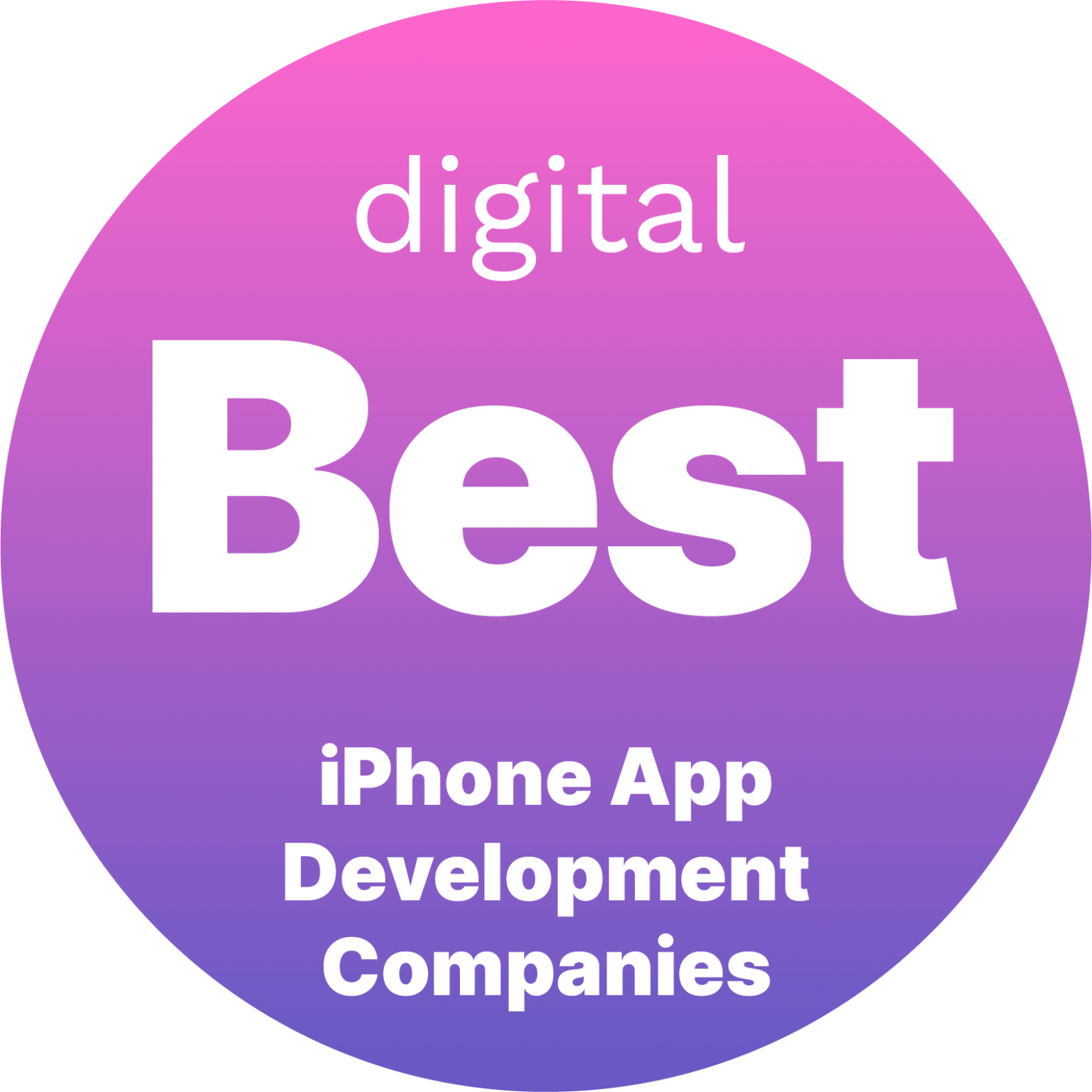Key Takeaways
- Start Early & Research Deeply: Successful app launches begin weeks (if not months) before release. Conduct thorough market research to define your target audience and unique value proposition. Apps that invest in pre-launch marketing 6–8 weeks ahead see significantly higher day-one retention (up to 30–85% improvements in some studies).
- Build Pre-Launch Buzz: Create a landing page and build an email list or waitlist to capture interested users early. Offer sneak peeks, beta access, or referral rewards to drive word-of-mouth. For example, Robinhood’s referral waitlist helped it amass 1 million signups before launch, demonstrating the power of pre-launch hype.
- Multi-Channel Outreach: Leverage social media and influencer marketing to generate excitement before launch. Engage industry influencers, cultivate an online community, and secure press coverage (TechCrunch, Product Hunt, etc.) ahead of time. Don’t forget App Store Optimization (ASO) – optimize your app store listing (keywords, visuals, etc.) pre-release to maximize visibility, since ~70% of app discovery happens via in-store search. Every pre-launch tactic – from beta testing to PR outreach – should feed into a data-driven launch strategy for maximum impact.

Why Pre-Launch Marketing Matters
Launching an app without marketing is like opening a store in the desert – if no one knows about it, even the best product can flop. The mobile app ecosystem is immensely competitive, with nearly 2 million iOS apps and almost 3 million Android apps available. Thousands more are added each day. This saturation means user attention is scarce and discoverability is a huge challenge. It’s no surprise that lack of market need or awareness is a top reason (42% of cases) why startups fail. Pre-launch marketing directly tackles this challenge by building audience awareness and interest well before release.
Importantly, effective pre-launch campaigns don’t just attract users – they attract the right users and set the stage for strong retention. Research shows about 25% of users abandon a new app after just one use. However, apps that execute solid pre-launch marketing enjoy dramatically higher engagement out of the gate (one report by Apptentive found 85% higher day-one retention for apps with pre-launch campaigns). By priming your target audience and refining your product through early feedback, you increase the odds that users who download on launch day will stick around. In short, pre-launch marketing can make the difference between launching to crickets or climbing the app charts. It’s about ensuring that when your app finally goes live, there’s already a community of interested users ready to download, share, and become ambassadors for your product.
Below, we’ll dive into the most effective pre-launch marketing strategies – from market research and landing pages to influencer outreach and App Store optimization – and how to execute each step. These strategies apply to mobile apps of all categories and will help set your app up for a successful debut.
Conduct Thorough Market Research and Define Your Audience
Every successful app launch begins with knowing your market and audience. Before you spend a dollar on promotion or write a line of code, invest time in research. Identify the problem your app solves and who your ideal users are. Analyze competitors’ apps in your domain: What are they doing well? Where do they fall short? Which user needs are unmet? This competitive analysis reveals gaps your app can fill and informs how to position your product. As one Dogtown Media article advises, “Start with market research: examine the industry or domain your app will operate in… This analysis will help you identify gaps your app could fill or unique value you can offer to stand out.”].
Pay special attention to customer feedback on existing apps. App store reviews and social media comments about competitors can be a goldmine for insights. Look for common user complaints and feature requests – these highlight pain points your app could address or pitfalls to avoid. Gathering these insights early will shape your app’s feature set and marketing messages to closely align with what users actually want.
 Equally important is defining your target audience persona. Who are your early adopters going to be? Consider demographics (age, gender, location), psychographics (interests, behaviors), and where these people discover new apps. This will guide everything from your ad targeting to the language and design you use on your landing page. If possible, conduct surveys or informal interviews with people in your target group to validate that your app idea resonates. It’s far better to find out pre-launch if your messaging or concept isn’t clicking, rather than after you’ve spent your whole budget.
Equally important is defining your target audience persona. Who are your early adopters going to be? Consider demographics (age, gender, location), psychographics (interests, behaviors), and where these people discover new apps. This will guide everything from your ad targeting to the language and design you use on your landing page. If possible, conduct surveys or informal interviews with people in your target group to validate that your app idea resonates. It’s far better to find out pre-launch if your messaging or concept isn’t clicking, rather than after you’ve spent your whole budget.
Remember, failing to understand the market can doom an app – no amount of marketing can save a product that people don’t need. In fact, analysis by CB Insights found “no market need” was the reason for 42% of startup failures. Pre-launch research helps you avoid this fate by ensuring there’s demand for your app and that your value proposition is clear and compelling. It also gives you the data to craft marketing copy that speaks directly to your audience’s needs. By the end of this research phase, you should be able to fill in the blanks: “Our app helps ___ (audience) who need ___ (problem/need) by providing ___ (solution).” That focus will drive all your pre-launch outreach.
Build a Landing Page and Early Signup Program
One of the core tools in pre-launch marketing is a dedicated landing page or pre-launch website for your app. This is the digital home for your app before it hits the app stores – a place to direct all your early marketing traffic. A good landing page should succinctly communicate your app’s value proposition, feature some eye-catching imagery or video of the app in action, and most importantly, capture visitor information (typically via an email signup form). The goal is to convert curious visitors into a list of potential users you can mobilize on launch day.
Offer something in return for signups to boost conversions. This could be early access to the app (beta invites), exclusive content (like an ebook or guide relevant to your app), or simply updates and an “insider” status for being first to know when the app launches. Many successful startups have used waitlist and referral programs to great effect at this stage. A famous example is Robinhood, which in its pre-launch phase set up a simple landing page pitching commission-free trading and a signup form.
By incentivizing people to refer friends in exchange for moving up the waitlist, Robinhood’s campaign went viral – Day 1 saw 10,000 signups, Week 1 grew to 50,000, and within a year they had a million people signed up. This not only proved market demand but also created a ready pool of engaged users at launch. You may not hit Robinhood numbers, but the principle scales: even getting a few hundred or a few thousand interested users pre-registered can make a big difference in gaining early traction.
Another classic tactic is to implement a viral referral incentive. For instance, Dropbox’s beta referral program (though for a launched product) is a case in point – by offering extra storage to users who invited friends, Dropbox increased signups by 60% through word-of-mouth. You can adapt this idea for pre-launch: e.g., “Join our waitlist and get priority access. Invite 3 friends to move up 100 spots in line.” This motivates your early fans to bring others on board. Each new sign-up is essentially free, highly-qualified marketing.
Make sure your landing page clearly conveys what problem your app solves and includes strong calls-to-action (CTA). The CTA could be “Sign up for early access,” “Join the beta,” or “Get launch updates.” Keep the form simple – often just an email is enough friction. Robinhood’s landing page converted at over 50% because it was laser-focused and low-friction. Consider also adding social proof if available (e.g., quotes from testers or indicators of interest like number of sign-ups so far) to build credibility.
Finally, don’t let those sign-ups go cold. Nurture your early community via email updates in the weeks leading up to launch. Share development milestones, behind-the-scenes peeks, or tips related to your app’s domain. This keeps them engaged and eager. When launch day arrives, you can mobilize this group to download the app, leave reviews, and spread the word. An email list is a direct line to potential users – treat it as one of your most valuable pre-launch assets. Also consider creating a sense of exclusivity; phrases like “Join our exclusive beta” or “Be the first to try…” make people feel part of something special, which can further drive sign-ups.
Leverage Social Media and Influencer Outreach
In the mobile age, social media is your word-of-mouth amplifier. Long before launch, you should establish a social media presence for your app – whether that’s a Twitter profile, Instagram page, LinkedIn page, TikTok account, or a Facebook community (choose channels that your target audience frequents). Use these platforms to start sharing content that resonates with your future users: think industry tips, problem-solution discussions, development updates, and teaser content about your app’s features. The goal is to build a following and foster a sense of anticipation. Encourage conversations: polls, questions, or sneak-peek videos can get people talking and sharing. By the time you launch, you’ll have an audience primed to support you.
A particularly potent extension of social media is influencer marketing. Partnering with influencers – individuals who have credibility and a following in your app’s niche – can dramatically expand your reach. Influencers could be YouTubers, Instagram/TikTok creators, bloggers, or even respected figures on LinkedIn or Twitter, depending on your app’s focus. The key is that their audience overlaps with your target users.
 An endorsement or preview from the right influencer can expose your app to thousands of potential users in a trusted way. In fact, over 60% of marketers say influencer marketing yields better ROI than traditional ads, and 61% of consumers trust influencer recommendations compared to only 38% who trust brand-produced ads. That trust factor is gold for a new app no one’s heard of yet.
An endorsement or preview from the right influencer can expose your app to thousands of potential users in a trusted way. In fact, over 60% of marketers say influencer marketing yields better ROI than traditional ads, and 61% of consumers trust influencer recommendations compared to only 38% who trust brand-produced ads. That trust factor is gold for a new app no one’s heard of yet.
To execute an influencer campaign pre-launch, start by identifying influencers who speak to your audience. Tools like BuzzSumo or simply manual research on social platforms can help. Look for engagement, not just follower count – a micro-influencer with 5k very engaged followers in a specific community might be more effective than a celebrity with a million indifferent followers. Reach out well in advance of your launch.
Offer them something of value: early access to the app (so they can create content around it), exclusive features, or even sponsorship if budget allows. Ensure any promotion feels authentic – audiences can sniff out disingenuous plugs. Encourage the influencer to share their genuine experience or a behind-the-scenes of using the app, rather than sounding like a press release.
Even without paid influencers, you can build community organically. Engage in relevant online forums, groups, or Q&A sites (Reddit, Stack Exchange, Quora, Discord communities, etc.). If your app is about fitness, be active in fitness Facebook groups or subreddits; share helpful advice and sneak in mentions of your upcoming app where appropriate (without being spammy). This grassroots approach can net you your first cohort of interested users who feel personally connected to you as a founder.
Another pre-launch social tactic is to create countdown content as launch nears. For example, a “10 days until launch” series with daily posts about a feature or a benefit of the app helps maintain excitement. Branded hashtags can also rally your early followers (e.g., #MyAppIsComing). You might even run contests or giveaways (like swag, free premium subscriptions, etc.) for those who engage or refer others prior to launch, further incentivizing social sharing.
The bottom line: be visible where your audience hangs out. Through consistent social media presence and strategic influencer partnerships, you’ll drastically expand awareness. Instead of launching to an audience of none, you’ll launch to a built-in base of fans who’ve heard about your app from sources they trust. Influencer marketing, in particular, has become a mainstream pillar of app launch strategy – the industry has grown into a $24+ billion market as of 2024. Your pre-launch plan should tap into that power to ensure your app isn’t just another unknown listing on the app store, but a buzzworthy new product people are already talking about.
Learn more about effective influencer marketing for app launches on the Dogtown Media blog.
Run a Beta Test and Gather User Feedback
Opening your app to a group of beta testers before the full launch can be invaluable. Beta testing allows you to field-test your app with real users and iron out bugs or UX issues, but it’s also a marketing tactic: it builds a cohort of early evangelists and generates credibility for launch. Nothing says “this app is worth trying” like having a pool of beta users who love it and provide testimonials or positive reviews on day one.
Start by deciding what kind of beta makes sense – closed beta (invite-only, perhaps to a select group like your email waitlist or specific user segments) or open beta (anyone can join, perhaps limited to a certain number of signups or a geographic region). For many apps, a closed beta with a few dozen to a few hundred testers is manageable and effective. You might recruit testers from your sign-up list (“Join our beta program and get early access!”), from social media followers, or from communities of enthusiasts relevant to your app. You can also use platforms like BetaList, Product Hunt’s upcoming section, or Reddit (subreddits like r/AlphaandBetaUsers) to find volunteers who enjoy testing new apps.
When beta testing, collect as much feedback as possible. Provide an easy channel for beta users to send feedback – whether through in-app feedback forms, email, a Discord/Slack channel, or a private forum. Encourage honesty: what did they like, what confused them, what would they change? This is your chance to uncover issues that your development team overlooked because they are too close to the product. As marketing expert Neil Patel points out, beta testing is the first opportunity to get unbiased first-hand feedback from your target audience. Internal team feedback is fine, but your team isn’t the customer – real users might have completely different perspectives.
Crucially, act on the feedback. If testers report crashes or critical bugs, fix those before launch. If many ask for a particular feature or find a certain workflow clunky, consider improvements (if not by launch, then shortly after). Beta testing isn’t just a ceremonial step; it should tangibly improve your app’s quality. Remember, a smoother product at launch means happier users and fewer 1-star reviews. The better prepared you are before launch, the more likely it is that users will have a positive experience… which can boost the number of positive reviews on the app stores, helping your ASO and drawing in new users. Early positive reviews are gold for algorithmic ranking and social proof, and beta testers are often the source of those initial reviews.
Don’t forget to keep beta testers engaged and appreciated. These folks are doing you a favor by testing an unfinished product. Communicate updates, thank them for specific feedback, and consider rewarding them – for example, free premium access for X months when the app launches, a shout-out on social media, or swag. By making beta participants feel like VIPs, you increase the likelihood they’ll become enthusiastic ambassadors for your app. Many successful apps (from Gmail to Slack) started with invite-only betas that not only refined the product but also created FOMO and a built-in advocate user base.
Also, use beta to prep some case studies or testimonials for launch marketing. If a beta user says “This app saved me 5 hours a week!” or “I love how intuitive it is,” ask their permission to quote them. Real user stories will add credibility in your app store description, website, or press materials.
Logistically, tools like Apple’s TestFlight and Google Play’s beta program make distributing pre-launch app versions relatively easy. They allow up to thousands of testers; you likely won’t need that many, but the capacity is there. Manage expectations with testers that the app is beta (there may be bugs) and that their feedback will directly influence the final product. This sense of involvement can excite users – they feel like part of the app’s creation story, which often makes them even more eager to see it succeed.
In summary, beta testing serves both as quality assurance and guerrilla marketing. You improve the app and simultaneously cultivate a group of early champions. By launch day, these champions can leave positive reviews, refer friends, and provide credible word-of-mouth validation that your app delivers on its promises.
Engage PR and Media Outlets for Coverage
Getting press coverage or being featured on the right platform can provide a huge boost to your app’s visibility at launch. Many businesses assume press coverage is out of reach, but tech journalists and bloggers are often hungry for interesting apps and stories – especially if you pitch them a compelling angle. The key is to start media outreach early, before your launch, and to have your materials prepared.
Begin by crafting a press kit and press release. Your press kit can include screenshots of the app, a short video or demo (if available), an app description, key features, your team bio, and contact information. The press release should concisely announce what your app is, when it’s launching, and why it’s noteworthy (e.g., what problem it solves or any unique story like founding story or interesting data). Having these ready in advance means that when you reach out to media or they catch wind of your app, you can immediately provide them with the info they need to write about it.
Identify relevant media outlets and reporters: think tech news sites (TechCrunch, VentureBeat, Mashable, The Verge), industry-specific blogs or magazines (if your app is in health, finance, etc., target those verticals), and local media if applicable (“Local startup launches app to solve X”). Don’t overlook smaller bloggers or niche websites – sometimes a post on a niche blog can drive highly qualified users. Also, consider sites like Product Hunt, which is a community-driven platform for discovering new tech products. Launching on Product Hunt on your release day (or even in a “coming soon” capacity) can yield an early adopter spike. In fact, data suggests an average B2C app or product that does well on Product Hunt might get on the order of 500–1500 signups from that channel alone. Coordinating a Product Hunt launch requires some prep (activating your network to upvote, posting at the right time, etc.), but it can act like a modern press hit, driving both users and further media interest.
When pitching journalists, personalize your outreach – reference a recent article they wrote on a related topic, and explain why your app would interest their readers. Focus on the story or problem/solution, not just “we made an app.” Are you leveraging a hot trend (AI, telehealth, fintech)? Are you solving a relatable everyday pain point? Do you have impressive early metrics or a founder story that stands out? These angles increase your chance of coverage. And be sure to mention any social proof you have (“10,000 people signed up for our waitlist” or “backed by XYZ accelerator” etc.).
It’s also wise to engage with media communities ahead of time. For instance, become active on HARO (Help A Reporter Out) or relevant journalist Twitter threads, so that you’re on the radar. News sources like TechCrunch or Product Hunt are often easier to reach for app launches than founders think – but you shouldn’t wait until the last minute. Start building relationships and participating in those communities early to build name recognition. This could mean commenting insightfully on journalists’ posts, contributing guest articles to smaller publications, or attending industry events/webinars where media folks are present. By the time you formally pitch your app, you’re not a stranger.
When launch week arrives, coordinate your PR push. Send out your press release, publish a blog post on your own site, activate any contacts or friendly journalists, and of course encourage your network to share any coverage that appears. Even a brief mention in a single tech publication can be leveraged across your marketing (“As seen on TechCrunch!”). It lends credibility and can drive a flood of users to your app listing or website.
Lastly, ensure your app store listings are media-ready. Often journalists will pull screenshots or descriptions directly from the App Store/Play Store. Double-check that your app description is polished and that your screenshots are high-quality and tell a story (more on ASO next). It’s embarrassing if a great article sends intrigued readers to an App Store page that looks half-baked or has a typo in the first line of the description.
In summary, don’t underestimate PR as a pre-launch strategy. A single article or a top ranking on Product Hunt can deliver more visibility than weeks of ads – and often at no financial cost. It does take effort to craft your story and reach out, but the payoff in user acquisition and brand building can be huge. Even if you’re a small startup, act like you belong in the news. The exposure from media coverage can create a virtuous cycle: users attract more users, and credibility attracts more credibility.
For more tips, see Dogtown Media’s guide on marketing your startup for maximum discoverability, which includes advice on PR and influencer outreach.
Optimize Your App Store Presence (ASO) Before Launch
Many app developers leave App Store Optimization (ASO) until after launch – don’t make this mistake. ASO is the process of optimizing your app’s listing in the app stores (Apple App Store and Google Play) to improve its visibility and conversion rates. Effective ASO can be started before launch (often called “pre-optimization”) so that on Day 1 your app is poised to rank well for relevant searches and appeal to users who discover it. Considering that roughly 70% of app discovery happens through app store searches, this is one pre-launch project you can’t afford to skip.
Start with keyword research. Just as SEO is critical for websites, keywords are critical for app store search. Use ASO tools (like AppTweak, Sensor Tower, or Gummicube) or even the stores’ autocomplete suggestions to find what terms people use when looking for apps like yours. For example, if you’re launching a budgeting app, find out if more people search “budget planner” vs. “expense tracker” vs. “money manager.”
These insights should guide the keywords in your app title, subtitle, and keyword field (on iOS) or description (on Android). Pre-optimization research helps you discover what features and terms are popular in your app’s space – essentially doing your market research homework before launching an app. Implementing this research, you might decide to incorporate a high-volume keyword into your app’s name (e.g., “MyBudget – Expense Tracker” to capture that search traffic). Many top apps use a mix of branded and generic keywords in their title for this reason.
Next, prepare compelling visuals for your app listing. These include the app icon, screenshots, and (optionally) an app preview video. Visual assets have a big impact on conversion rates (i.e., turning store visitors into installers). Design an icon that is simple yet distinctive – it should suggest your app’s purpose and stand out in a sea of thumbnails. Screenshots should be high-resolution and annotated with short captions to highlight key features or benefits.
Don’t just show blank interface shots; use them to tell a story (e.g., Screenshot 1: “Track Expenses Easily” with an image of the UI, Screenshot 2: “Get Insights & Analytics” with charts, etc.). If possible, include an app preview video: a 30-second clip can boost conversions by showcasing the app’s look and feel. On iOS, you can add up to 3 preview videos; on Google Play, you can have a YouTube video link. Studies have shown that adding an app store video and optimizing screenshots can significantly increase conversion rates (sometimes on the order of 10-30% improvements, depending on the quality of the assets).
Crucially, you can often set up your app store listing in advance of your launch. Both Apple and Google allow you to create the app record, fill in metadata, upload screenshots, and even offer the app for pre-order/pre-registration. Apple’s App Store lets you open up pre-orders up to 180 days before release (previously 90 days). This means users can click “Pre-Order” and the app will automatically download to their device upon launch (or notify them). Google Play similarly offers pre-registration for upcoming apps.
Utilizing these features can give your launch a boost – you might garner a few thousand (or more) pre-orders that all convert to downloads on day one, which can propel your app up the “New Releases” and category ranking charts. It’s essentially a way to front-load your launch day downloads. If you choose to go this route, definitely announce it to your email list and social followers: “Pre-order now available on the App Store!” – it adds to the excitement and commitment.
Before launch, also line up your app store analytics: register for App Store Connect and Google Play Console, and familiarize yourself with metrics like page impressions, conversion rate, and keyword rankings. This will help you monitor performance from day one and adjust your ASO strategy post-launch (ASO is ongoing – you’ll likely refine your keywords and screenshots after seeing real data). But by handling the basics pre-launch – good keywords, a clear description, attractive visuals, and perhaps enabling pre-order – you give your app a strong start. As one Dogtown Media guest post on pre-launch ASO notes, preparing your metadata and creative assets ahead of time lays the foundation for your app’s marketing as you start to scale. You essentially “prime” the app store pump so that once your app is live, users can find it and are enticed to install it.
Check out our detailed tips on pre-optimizing your app store listing to maximize launch visibility.
Use Metrics and Analytics to Guide Launch Timing and Strategy
Your pre-launch marketing shouldn’t operate on gut feeling alone – leverage data and analytics at every step to make informed decisions, including when and how to launch. Here are a few data-driven approaches:
- Track Your Landing Page Metrics: Once your landing page is up, monitor traffic and conversion rates. Which channels are driving the most sign-ups (email, social, referrals, ads)? If you notice, for example, that a blog post mention or a particular forum thread brought a spike of sign-ups, you might double down on that channel. Conversely, if a campaign isn’t yielding interest, pivot your strategy. Use Google Analytics or similar tools to see how engaged pre-launch visitors are (time on page, etc.). If engagement is low, test different messaging or creatives.
- Set KPIs for Pre-Launch Campaigns: Define what success looks like before launch. Maybe it’s “1,000 beta signups” or “500 email subscribers” by launch day. These targets will help you gauge if you need to extend your pre-launch timeline or ramp up marketing. For example, if you’re two weeks from launch but only at 50% of your email signup goal, it might be worth postponing launch a bit and intensifying marketing, rather than launching to a smaller-than-expected audience. It’s often better to delay a launch for strategic reasons than to rush out and underdeliver on impact.
- Use Beta Test Data: If you ran a beta, dig into the analytics from it. What was the retention rate after 1 week or 1 month among beta users? If it’s low, that’s a red flag – it might indicate you need to improve the app (or target a different audience) before a broader launch. What features were most used, or where did users drop off? These insights can guide last-minute tweaks. Also, monitor crash logs or error reports during beta; set a goal like “crash-free rate of 99%” before launch to ensure quality. Many companies effectively do a soft launch in a smaller market (or a subset of users) to validate metrics like retention, Lifetime Value, and cost per acquisition, before pouring money into a full launch. If the metrics don’t meet thresholds, they iterate, then launch globally once they do.
- Choose the Right Launch Timing: Analytics can inform when to launch. For instance, analyze your target users’ behavior – are they more active on apps during weekdays or weekends? If you have a social or productivity app, a mid-week launch might work; for a gaming or consumer app, a weekend launch might catch users when they have free time. Some industry data historically suggested that Sunday is an uncrowded yet high-download day for iOS apps, whereas Wednesdays and Thursdays tend to be popular (and thus competitive) launch days. While these trends evolve, the principle stands: consider timing that maximizes your visibility. Avoid launching on major holidays or when a competitor or big tech event might steal your thunder (for example, don’t launch the same day as Apple’s iPhone keynote if tech press attention is important). Also, coordinate with any platform featuring opportunities – Apple App Store editors often finalize feature picks by mid-week for the following week, so having your app ready a bit earlier and pitching to them might land you a coveted feature slot.
- A/B Test Marketing Messaging: If you have enough traffic to your pre-launch page or ads, experiment with different messaging to see what resonates best. Perhaps one tagline yields a 5% signup rate while another yields 15%. Use that learning to refine your app’s description, your launch announcements, etc. Data-driven messaging ensures that when broad audiences see your app for the first time, you’re using the most compelling value proposition.
- Monitor Competitor Moves: Keep an eye on your competitors’ user reviews, feature updates, or marketing campaigns in the lead-up to your launch. If a competitor app suddenly gets bad press or user backlash, that might be a window to launch when users are looking for an alternative. Or if they’re ramping up a big campaign, you might adjust your plan to avoid being overshadowed. Tools like App Annie (Data.ai) or Sensor Tower can track competitors’ rankings and user sentiment over time.
Ultimately, stay flexible and responsive to what the data tells you. Pre-launch marketing is as much art as science – you might start with certain hypotheses (e.g., “Influencer X will bring us lots of users” or “Feature Y is our selling point”), but the metrics could tell a different story. Be willing to iterate on your approach. If your early indicators (like landing page signups or beta feedback) are below expectations, investigate why – maybe the value proposition isn’t clear, or you’re targeting the wrong channels. It’s far better to adjust course pre-launch than to charge ahead and have the launch underperform.
Using analytics to guide your launch also extends to setting up tracking for post-launch. Have your attribution and analytics SDKs in place so that from day one, you can see where downloads are coming from and how users behave in the app. This will allow you to double down on effective channels and fix any onboarding issues quickly after launch.
In summary, treat your pre-launch period as an experimental sandbox backed by metrics. Measure everything you reasonably can – and use those insights to optimize both your app and your marketing plan. By launch day, you won’t be guessing at what strategies will work; you’ll have a data-informed playbook, and you’ll launch at a time and manner designed for maximum impact.
Dogtown Media’s post-launch analytics guide, “The First 90 Days After App Launch,” is a great resource to continue the data-driven mindset beyond launch.
FAQ: Pre-Launch Mobile App Marketing
Q: How far in advance should we start marketing our app before launch?
A: Ideally, begin your pre-launch marketing at least 2–3 months before launch, with major activities kicking off in the final 6–8 weeks prior to release. Starting early gives you time to build an audience and iterate on feedback. In fact, many successful apps start buzz-building 3–6 months out if they can. At minimum, try not to “surprise launch” with zero pre-launch efforts – even a few weeks of solid outreach is better than nothing. Remember, the goal is that by the time your app is live, a core group of people are already aware and excited for it. Use the early period for market research, landing page setup, and maybe a teaser campaign, then ramp up with beta invites, content marketing, and PR in the last couple of months pre-launch.
Q: What should we include on a pre-launch landing page for our app?
A: A pre-launch landing page should cover these essentials:
- App Name & Value Proposition: Clearly state what your app does and why it’s awesome. A one-liner tagline or headline should grab attention (e.g., “Achieve Your Fitness Goals with Personal Coach in Your Pocket”).
- Visuals or Video: Show an attractive screenshot or a quick demo video/mockup of the app. People should instantly get a feel for the user interface and experience.
- Email Signup or Waitlist Form: This is crucial – include a prominent call-to-action for visitors to sign up for updates or early access. Keep the form simple (email only, or name and email).
- Key Benefits or Features: Briefly list 3-5 of the most compelling features or pain points solved by your app. Use short descriptions or icons to make it scannable.
- Social Proof or Media Mentions (if available): If you have any quotes from beta users (“I love how easy this app is!”) or mentions like “Featured on Product Hunt”, display them. If you don’t have these yet, it’s fine – you can add them post-launch.
- Contact Info & Social Links: Provide a way for people to follow your journey or get in touch. Link to your app’s social media profiles and provide an email contact.
Optionally, you can add elements like a FAQ section addressing “Coming when? Which platforms? Is it free?”, etc., or a blog section if you’re doing content marketing. But keep the overall page focused – its main job is to convert visitors into subscribers. Tools like Launchrock, Cardd, or custom HTML can be used to set up a quick landing page if you’re not building a full site. Also, make sure the page is mobile-friendly (many will discover it via their phones). A well-crafted landing page not only collects emails, it also serves as a “home base” for any ads or press – it’s where you’ll send interested folks who want to learn more.
Q: How can we find beta testers for our app before launch?
A: There are several ways to recruit beta testers:
- From Your Sign-Up List: Your pre-launch email subscribers or waitlist members are prime candidates. They’ve already expressed interest, so invite them to try the beta. You can segment an invite to, say, the first 100 or a random selection if the list is large.
- Personal Networks: Leverage friends, family, colleagues, or existing customers (if you have another product) who fit your target user profile. Be careful to also get feedback beyond close acquaintances, as they might be too forgiving – but they can help kickstart the process.
- Online Communities: Identify forums, subreddits, Facebook groups, Slack communities, etc., related to your app’s domain. For example, if it’s a fintech app, the r/personalfinance subreddit or FinTech Facebook groups might have folks interested in early access. Make a genuine post asking for beta volunteers, highlighting what the benefit is for them (e.g., “be the first to try it, get a gift card for feedback, shape the product with us,” etc.). Platforms like BetaList, Betabound, or Product Hunt’s Upcoming section are also dedicated to showcasing upcoming apps to early adopters – listing your app there can attract beta users.
- Universities or Niche User Groups: If your app targets a specific demographic (say students, or nurses, or gamers), reach out to clubs, organizations, or local groups in that demographic. A targeted call for beta testers in those circles can get a high-quality response.
- Social Media Calls: Use your social media presence to announce that you’re accepting beta signups. Encourage sharing – you might say “Know someone who’d love to test our app? Tag them!” This can organically bring in testers.
- Closed Beta Platforms: Apple’s TestFlight and Google Play both support public beta links. You can share a TestFlight link on social media, for instance, and anyone with an iPhone can tap to join (up to 10,000 users). This makes it easy to onboard testers – no UDIDs or manual invites needed.
When recruiting, be clear about what you’re asking for and what testers get. Even if there’s no monetary reward, emphasize that their feedback will directly influence the app, and they get to use it first. People love being “insiders” in a product journey. Lastly, once you have testers, communicate actively – welcome them, maybe create a private group or channel for discussion, and let them know how to send feedback. A well-managed beta test not only improves your app but also turns many testers into loyal users and advocates.
Q: How do we approach influencers or get media coverage if we’re a small startup?
A: It might seem intimidating, but even as a small startup, you can successfully pitch influencers and media with the right approach:
- For Influencers: Start by building a relationship if possible. Follow them, engage with their content (thoughtful comments, shares) for a while before asking for anything. When reaching out, personalize your message – mention specifically why you think your app fits their audience. Offer them something valuable: exclusive early access, ability to host a giveaway for their followers, or a commission/affiliate arrangement if appropriate. Micro-influencers often collaborate in exchange for being part of something new or for nominal compensation, whereas larger influencers might have fees. If you have no budget, focus on smaller influencers who are passionate about your space – many will be flattered by an early preview. Provide a clear way for them to try the app (beta access code or TestFlight link) and highlight aspects of the app that their content could focus on (e.g., “We have a cool AI feature your tech audience might geek out on.”). Ensure any agreement on deliverables (like a certain number of posts or an honest review video) is clear, but also give them creative freedom – authentic content performs best. Remember, you don’t need celebrity influencers; a handful of niche voices can create a ripple effect.
- For Media/Press: Craft a compelling story around your app – media doesn’t care about another app launch per se, they care about what’s interesting for their readers. It could be the problem you’re solving (e.g., “New app tackles childcare scheduling for busy parents”), a human-interest angle (e.g., “Founder created this app after overcoming X challenge”), a trend (“This app is tapping into the telehealth boom”), or impressive traction (“10k users signed up before launch”, if true). Identify the right journalists – use tools like Muck Rack or just Google to find reporters who have written about your category. Send a brief, personalized email: a catchy subject line and 2-3 short paragraphs at most. Include the key points and an offer for more info or an interview. Attach or link your press kit for convenience. If you don’t hear back, don’t be discouraged – journalists are swamped. You can follow up once politely after about a week. Also consider newswire services (like PR Newswire) for distributing your press release, though results can vary.
Additionally, leverage Product Hunt and Reddit strategically for exposure. On Product Hunt, it helps to have a “hunter” (someone respected who submits your product) and to gather some early upvote support from friends/community. Reddit has forums like r/startups or domain-specific subreddits where an “I made this” post can do well if it’s genuine and not overly self-promotional. Always tailor your tone to the platform – authenticity is key. For any outreach, the main principle is: show clear value (to the influencer’s followers or the publication’s readers) and make it easy for them (provide assets, be responsive). As Dogtown Media notes, building those relationships ahead of time and participating in communities can dramatically improve your success rate with press. Even a few mentions or social shares can snowball into broader interest.
Q: What metrics should we track to know if our pre-launch marketing is working?
A: Several key metrics can indicate the health of your pre-launch efforts:
- Email Sign-ups / Waitlist Count: This is often the primary KPI. Is your subscriber list growing steadily? A spike in sign-ups can indicate a successful campaign or press mention; a plateau might mean you need to generate new buzz. Beyond just total numbers, look at sign-up conversion rate (what percentage of landing page visitors join the list) – optimize your page or offer if this rate is low.
- Engagement Metrics: Are people engaging with your pre-launch content? This includes email open and click-through rates (for any newsletters/updates you send), social media engagement (likes, shares, comments on your posts about the upcoming app), and referral invite rates (if you have a referral program, do people actually share it?). High engagement suggests your message is resonating; low engagement may signal a need to refine your messaging or targeting.
- Beta User Retention and Feedback: If you have a beta, track retention (what percentage of beta users are still active after X days) and usage (e.g., average sessions per user). If beta retention is strong, that’s a green light that users find value. Also categorize the feedback: are the majority of comments positive, or are there common complaints? Perhaps create a simple sentiment tally or tag feedback by theme to see patterns.
- Social Follower Growth: Monitor your follower counts on key platforms and more importantly the trend – are you gaining followers as launch approaches? If you run campaigns like a contest or teaser, see how those affect growth. While followers are a vanity metric to some extent, growth indicates increasing awareness.
- Press and Referral Traffic: In your Google Analytics (or similar), watch for traffic sources. Did that tech blog mention send a lot of visitors? Are people coming from links shared on Reddit or Twitter? If you see a surge from a particular source, that’s a sign that source/message worked. If you invested time in a certain forum or content piece and see little traffic, reconsider that effort.
- Community Metrics: If you have a Discord, Slack, Telegram group, etc. for early adopters, track membership and activity there. A vibrant pre-launch community can be a huge asset. If it’s quiet, perhaps prompt more discussion or incentive chatter (e.g., share a new sneak peek and ask for opinions).
- Ad Metrics (if running ads): If you allocate some budget to Facebook/Google/Twitter ads for pre-launch signups, keep an eye on cost-per-lead (CPL) or cost-per-click. This helps ensure you’re acquiring sign-ups efficiently and can guide whether to scale up ads or adjust targeting.
Ultimately, all these feed into the big question: “Are we building enough momentum to have a successful launch?” One proxy metric some use is “launch day readiness score” – for instance, the number of confirmed users (email list + beta users) who are very likely to download on day one. If that number aligns with your goals (which might tie to chart rankings or usage targets), you’re on track. If it’s lacking, you either extend the pre-launch period or intensify marketing. Post-launch, you’ll of course shift to metrics like downloads, active users, and reviews, but the work you do pre-launch will heavily influence those. So monitor and iterate now, when stakes are a bit lower, to ensure the best possible metrics when it really counts.
By keeping a close eye on pre-launch metrics, you can approach your launch date with confidence, knowing that you’ve built a solid foundation of demand and are prepared to address any weaknesses before going public.





